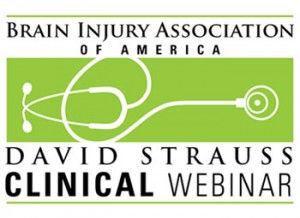2022.07.28 – Realities of the Recovery Journey after Pediatric Brain Injury (Recorded Webinar)
A David Strauss Memorial Clinical Lecture recorded webinar featuring Jennifer P. Lundine, Ph.D., CCC-SLP, BC-ANCDS.
To download the webinar, choose the “Download Now” option from the dropdown below. After completing the checkout process, you will receive an email with further instructions and a file that includes information about receiving your ACBIS CEU.
Aired live on July 28, 2022. Includes 1 ACBIS CEU.
Note: A certificate of attendance/ACBIS CEU certificate will not be available with the purchase of this webinar after July 31, 2025.
What happens after pediatric brain injury? Join Jennifer P. Lundine, Ph.D., CCC-SLP, BC-ANCDS as she reviews current research describing realities of life following pediatric brain injury, based on the perspectives of caregivers, youth with brain injury, and medical and educational providers. Their experiences will highlight implications for clinical care and strategies to improve the long-term outcomes for young people who experience brain injury.
Learning Objectives:
- List common barriers expressed by key stakeholders related to recovery following pediatric brain injury.
- List common positive experiences expressed by key stakeholders related to recovery following pediatric brain injury.
- List recommendations that could improve clinical care and outcomes for youth with brain injury, based on their lived experiences.
Speaker Bio:
Jennifer P. Lundine, Ph.D., CCC-SLP, BC-ANCDS, is an Associate Professor in the Department of Speech and Hearing Science at The Ohio State University and a clinical researcher at Nationwide Children’s Hospital, in Columbus, Ohio. She has over a decade of experience working as a speech-language pathologist on a pediatric rehabilitation unit. Her clinical, teaching, and research interests include cognitive-communication disorders associated with complex pediatric medical conditions, such as acquired brain injury (ABI). Specifically, her research focuses on improving gaps in access to and utilization of services designed to support children and adolescents with ABI and identifying specific approaches that would improve assessment and treatment practices following pediatric ABI.


